Oily skin can be a challenging skin concern to manage, but with the right skincare routine, you can keep shine at bay and prevent breakouts. By following a consistent routine that targets excessive oil production and clogged pores, you can maintain a healthy and balanced complexion. In this article, we will provide you with essential tips and product recommendations to help you create an effective skincare routine for oily skin.
Key Takeaways:
- Consistency is key in managing oily skin. Follow a daily skincare routine to keep oil production under control.
- Cleansing is the first and most important step in an oily skin care routine. Use a gentle cleanser specifically formulated for oily skin to remove excess oil and impurities.
- Exfoliation helps unclog pores and remove dead skin cells. Incorporate a chemical exfoliator containing alpha or beta hydroxy acids into your routine.
- Treatment products like those with benzoyl peroxide or salicylic acid can help prevent breakouts and improve the appearance of oily skin.
- Moisturizing is essential even for oily skin. Look for lightweight and oil-free moisturizers that won’t clog your pores.
Cleanse to Remove Excess Oil
The first step in an oily skin care routine is cleansing. It is essential to wash your face morning and night to cleanse away excess oil, sweat, and impurities that can contribute to breakouts. Choosing the right cleanser specifically designed for oily skin is crucial in achieving optimal results.
When selecting a cleanser, look for one that contains salicylic acid, a powerful ingredient known for its ability to remove excess oil and unclog pores. Salicylic acid works by penetrating deep into the skin and breaking down the sebum that can lead to oily skin and acne.
“Cleansing is a fundamental step in managing oily skin. It helps remove the excess sebum that can clog pores and contribute to breakouts. Look for a gentle cleanser formulated for oily skin to effectively cleanse and purify the skin.”
Using a gentle and non-comedogenic cleanser will ensure that your skin is thoroughly cleansed without stripping away its natural moisture. Avoid harsh cleansers or those containing drying ingredients that can cause the skin to produce even more oil in an attempt to compensate for the loss of moisture.
Massage the cleanser onto damp skin using gentle, circular motions, paying extra attention to areas that tend to be oilier, such as the T-zone. Rinse thoroughly with lukewarm water and pat dry with a clean towel.
By incorporating a proper cleansing routine into your skincare regimen, you can effectively remove excess oil, dirt, and impurities from your skin, leaving it clean, refreshed, and ready for the next steps in your oily skin care routine.
Exfoliate to Unclog Pores
Exfoliating is an essential step in managing oily skin. Not only does it remove dead skin cells, but it also helps to eliminate excess oil and unclog pores, minimizing the chances of breakouts. To effectively exfoliate your skin, consider incorporating a chemical exfoliator into your skincare routine.
Chemical exfoliators, such as those containing alpha hydroxy acid (AHA) or beta hydroxy acid (BHA), work to gently dissolve the bonds that hold dead skin cells together, revealing a fresh and renewed complexion. Unlike physical exfoliants, these chemical exfoliators provide a deeper and more thorough exfoliation without causing any irritation or damage to the skin.
When choosing an exfoliator for oily skin, opt for products specifically formulated to target excess oil and clogged pores. These products often contain ingredients like salicylic acid, which can effectively break down oil and debris, preventing them from clogging your pores.
Regularly exfoliating your skin will not only leave it feeling smoother and more radiant but also enhance the effectiveness of your other skincare products. By removing the buildup of dead skin cells and excess oil, your moisturizer, serums, and treatments can penetrate more deeply and provide better results.

Apply Treatment Products for Oily Skin
Using treatment products specifically formulated for oily skin can help manage breakouts and improve the appearance of the skin. Oily skin tends to be prone to acne and may also show signs of fine lines. By incorporating the right ingredients into your skincare routine, you can effectively address these concerns.
Prevent Acne with Benzoyl Peroxide
If you’re looking to prevent acne and control breakouts, benzoyl peroxide is a fantastic ingredient to include in your skincare arsenal.
“Benzoyl peroxide is a powerful antimicrobial agent that kills acne-causing bacteria and helps unclog pores,” explains Dr. Emma Johnson, a renowned dermatologist.
To use benzoyl peroxide effectively, follow these steps:
- Gently cleanse your face with a salicylic acid cleanser to remove excess oil and impurities.
- Apply a thin layer of benzoyl peroxide cream or gel to the affected areas.
- Allow the product to absorb into the skin and follow with a moisturizer.
Remember to start with a lower concentration of benzoyl peroxide (2.5% or 5%) to minimize any potential irritation and gradually increase if needed.
Reduce the Appearance of Fine Lines with Salicylic Acid
Salicylic acid is not only beneficial for treating acne but also for reducing the appearance of fine lines and wrinkles. This beta hydroxy acid gently exfoliates the skin, promoting cell turnover and revealing a smoother complexion.
“Salicylic acid has anti-aging properties and helps refine the skin’s texture,” says Dr. Sara Adams, a renowned skincare expert.
To incorporate salicylic acid into your routine:
- Use a cleanser or toner containing salicylic acid to gently exfoliate the skin and unclog pores.
- Apply a serum or moisturizer with salicylic acid to address fine lines and promote a more youthful appearance.
- Use sunscreen daily as salicylic acid can increase the skin’s sensitivity to the sun.
Remember to start with a lower concentration of salicylic acid to avoid potential irritation, and gradually increase as tolerated.
Consult with a Dermatologist
While benzoyl peroxide and salicylic acid are widely used treatments for oily skin, it’s essential to consult with a dermatologist to determine the best treatment options for your specific skin concerns. They can provide personalized recommendations and guidance tailored to your skin’s needs, ensuring optimal results.
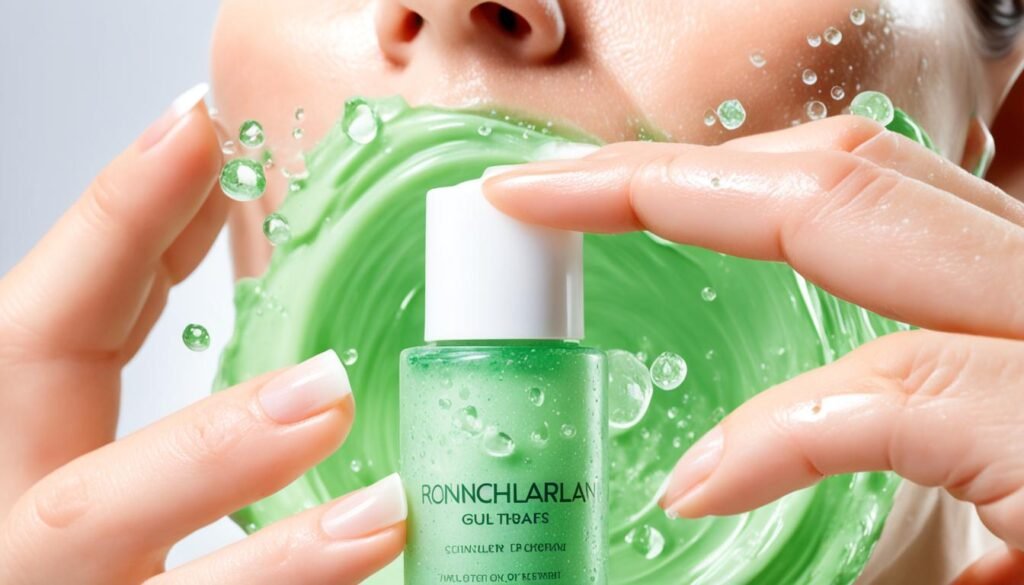
Moisturize to Hydrate Oily Skin
Contrary to popular belief, oily skin still requires moisturization. Although it may seem counterintuitive, using a lightweight and oil-free moisturizer can actually help hydrate the skin without adding excess oil.
When selecting a moisturizer for oily skin, look for products specifically formulated to address its unique needs. These moisturizers are often designed to regulate oil production and maintain a healthy balance in the skin. Consider choosing a moisturizer that contains ingredients like niacinamide, which can help regulate sebum production and keep your skin hydrated without clogging pores.
Moisturizing is an essential step in any skincare routine, including oily skin routines. It helps to replenish the skin’s moisture barrier, preventing dryness and maintaining a healthy complexion. Not moisturizing can actually lead to an overproduction of oil as the skin tries to compensate for the lack of hydration.
Benefits of Moisturizing Oily Skin:
- Hydrates the skin without adding excess oil
- Helps to regulate oil production
- Maintains a healthy moisture balance in the skin
- Prevents dryness and flakiness
“Moisturizing is an essential step in maintaining healthy and balanced skin. It helps to replenish the skin’s moisture barrier, preventing dryness and maintaining a healthy complexion.” – Dr. Emily Johnson, Dermatologist
| Key Tips for Choosing a Moisturizer for Oily Skin | Recommendation |
|---|---|
| Look for lightweight and oil-free formulations | Oil-Free Moisturizer by Cetaphil |
| Consider products with niacinamide | Niacinamide Moisturizer by The Ordinary |
| Avoid moisturizers with heavy oils and emollients | Oil-Free Gel Moisturizer by Neutrogena |
Remember, finding the right moisturizer for your oily skin may require some trial and error. Consult with a dermatologist for personalized recommendations based on your individual skin concerns and needs.
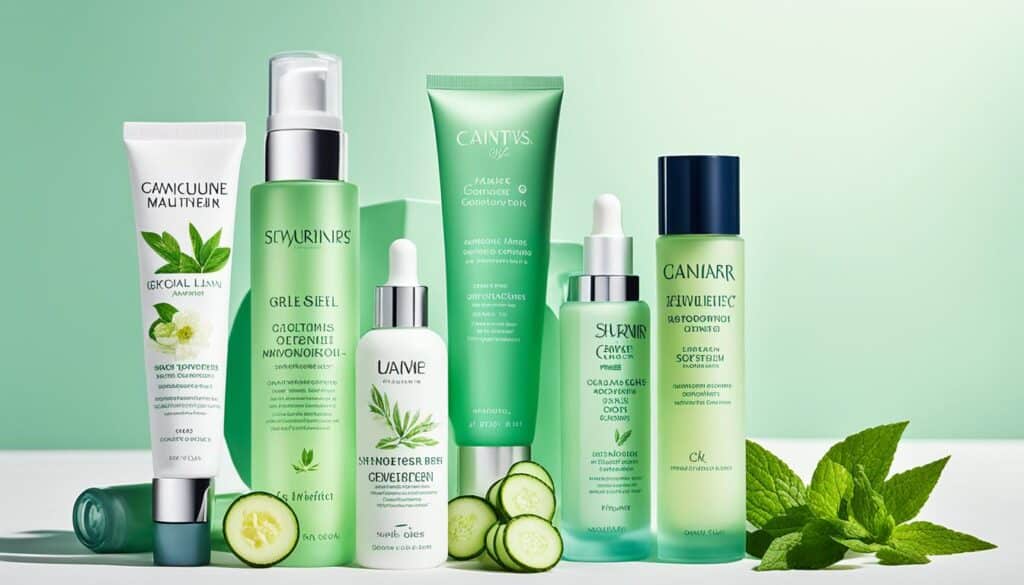
Protect with SPF to Prevent Sun Damage
Sun protection is crucial for maintaining healthy skin, regardless of skin type. Oily skin needs protection from the sun just like any other skin type. Applying a sunscreen with at least SPF 30 every morning is an essential step in protecting your skin from sun damage.
Not only does sunscreen shield your skin from harmful UV rays, but it also helps reduce the appearance of fine lines and wrinkles, keeping your skin looking youthful and healthy. Moreover, sunscreen plays a vital role in preventing skin cancer, a serious concern for everyone.
When selecting a sunscreen for oily skin, opt for oil-free and non-comedogenic formulas that won’t clog your pores or exacerbate acne-prone skin. These specially formulated sunscreens provide the necessary protection without leaving a greasy residue.
Remember to generously apply sunscreen to all exposed skin areas, including your face, neck, hands, and any other areas that will be exposed to the sun. Reapply every two hours, or more frequently if you are swimming or perspiring heavily. Don’t forget to pay extra attention to areas that are often overlooked, such as the ears, scalp, and back of the neck.
Why is Sunscreen Important for Oily Skin?
“Sunscreen is a skincare essential for everyone, regardless of their skin type. For individuals with oily skin, it is crucial to choose an oil-free and non-comedogenic sunscreen to avoid clogged pores and breakouts. By protecting your skin from sun damage, you can reduce the risk of skin cancer and maintain a healthy complexion.”
By incorporating sunscreen into your daily skincare routine, you are taking a proactive step towards protecting your skin health. The long-term benefits of using sunscreen are undeniable.
Preventing sun damage not only reduces the risk of skin cancer but also promotes overall skin health. Sunscreen helps prevent premature aging, keeping your skin looking fresh, youthful, and free from fine lines and wrinkles.
Additionally, using sunscreen consistently can help prevent acne and breakouts. Sun exposure can trigger the production of excess oil, leading to clogged pores and blemishes. By shielding your skin from the sun’s harmful rays, you can maintain a clearer complexion.
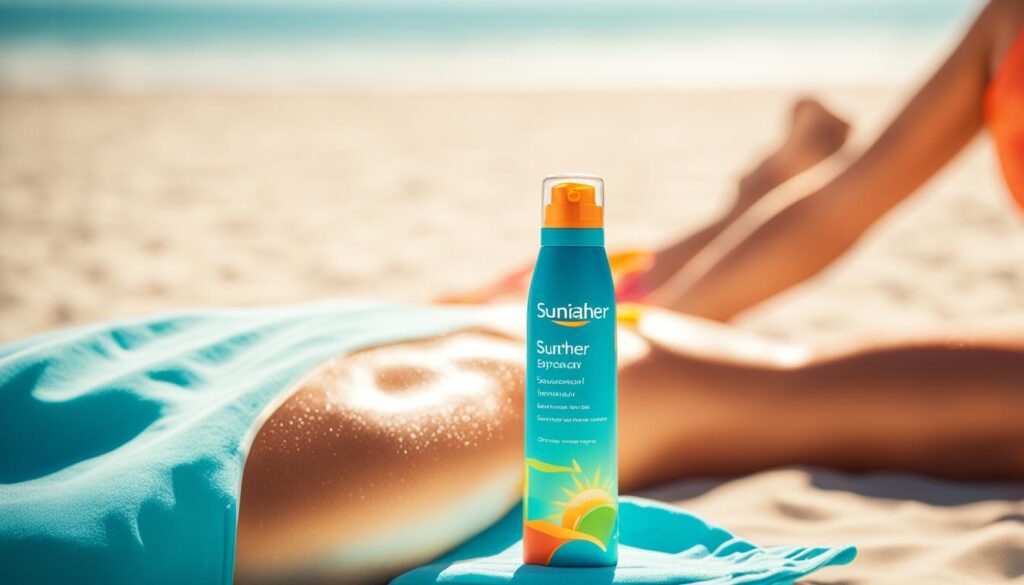
| Sunscreen Benefits for Oily Skin | Why It Matters |
|---|---|
| Protects against harmful UV rays | Reduces the risk of skin cancer |
| Reduces the appearance of fine lines and wrinkles | Promotes youthful and healthy-looking skin |
| Prevents acne and breakouts | Maintains a clearer and smoother complexion |
| Oil-free and non-comedogenic formulas | Avoids clogged pores and blemishes |
Key Ingredients for Oily Skin Care
Oily skin requires special attention to regulate oil production and improve skin texture. Incorporating key ingredients into your skincare routine can help address these concerns effectively.
Salicylic Acid
One of the most beneficial ingredients for oily skin is salicylic acid. As a beta hydroxy acid (BHA), salicylic acid has the ability to reduce swelling and unclog pores. It penetrates deep into the skin, dissolving excess oil and removing impurities that can lead to breakouts. Incorporating products with salicylic acid can help keep oily skin clear and blemish-free.
Retinol
Derived from Vitamin A, retinol is another powerful ingredient for oily skin care. It is known for its ability to reduce the appearance of fine lines and wrinkles, making it beneficial for oily skin that may also show signs of aging. Retinol can also help regulate oil production, resulting in a more balanced complexion. Including retinol in your skincare routine can help improve overall skin texture and appearance.
Niacinamide
Niacinamide, a form of Vitamin B3, is a versatile ingredient that offers multiple benefits for oily skin. It helps regulate sebum production, preventing excessive oiliness while keeping the skin hydrated. Niacinamide also has anti-inflammatory properties, which can help calm redness and irritation often associated with oily skin. By incorporating niacinamide into your skincare routine, you can achieve a more balanced and healthier complexion.
| Ingredients | Benefits |
|---|---|
| Salicylic Acid | – Reduces swelling – Unclogs pores – Controls oil production |
| Retinol | – Reduces fine lines and wrinkles – Regulates oil production |
| Niacinamide | – Regulates sebum production – Hydrates the skin – Reduces inflammation |
By including these key ingredients in your skincare routine, you can effectively manage oily skin and achieve a healthier complexion. Whether it’s using products with salicylic acid to unclog pores, incorporating retinol to reduce the appearance of fine lines, or utilizing niacinamide to regulate sebum production, these ingredients can make a noticeable difference in the overall health and appearance of your skin.
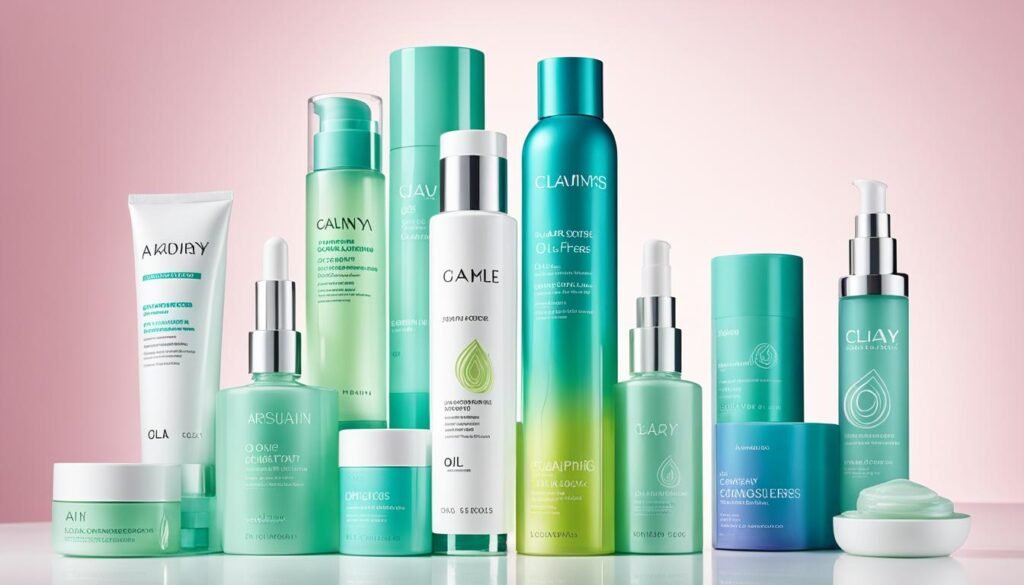
Factors that Contribute to Oily Skin
Oily skin can be influenced by various factors, including hormones, genetics, climate, and skincare routine.
Hormonal Changes
Hormonal changes, such as those that occur during puberty or menstruation, can increase oil production in the skin. Fluctuations in hormone levels can stimulate the sebaceous glands to produce more sebum, resulting in oily skin.
Genetics
Genetics also play a role in determining skin type, including whether someone has naturally oily skin. People with a family history of oily skin are more likely to experience excess oil production themselves.
Climate
The climate in which you live can affect your skin’s oil production. In humid climates, where there is more moisture in the air, the sebaceous glands may produce more oil to compensate, leading to oily skin.
Skincare Routine
Your skincare routine can also contribute to oily skin. Overwashing the face or using harsh skincare products can strip the skin of its natural oils, causing it to produce more oil to compensate. It’s important to find a balance and use gentle cleansers and skincare products specifically formulated for oily skin.
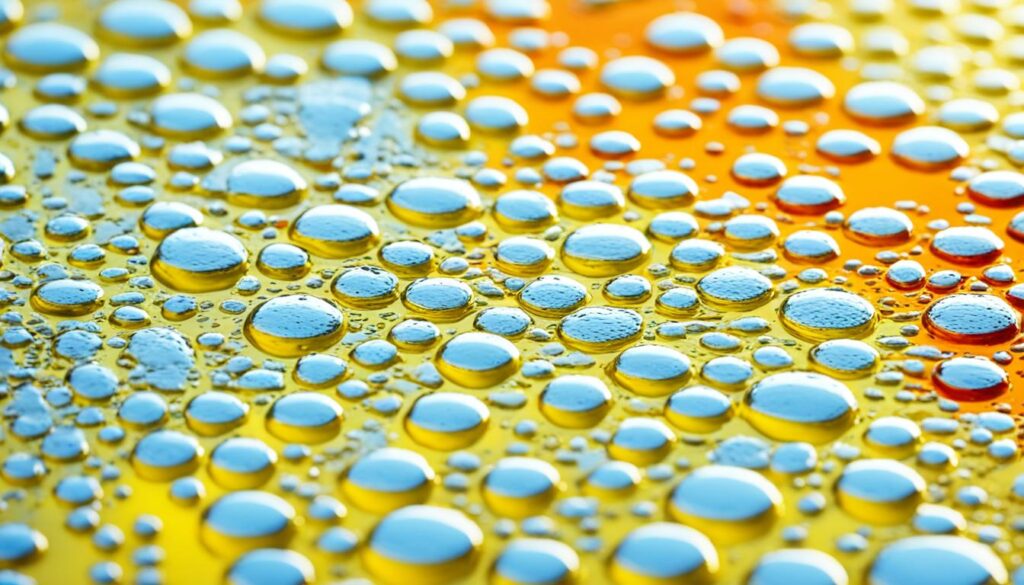
By understanding the factors that contribute to oily skin, you can make informed choices about your skincare routine and take steps to manage excess oil production. Next, we will explore additional tips and strategies for managing oily skin.
Also Read : Gentle Skincare for Sensitive Skin Solutions
Additional Tips for Managing Oily Skin
Aside from following a proper skincare routine, there are other practical tips that can help effectively manage oily skin. Incorporating these tips into your daily routine can enhance the overall health and appearance of your skin.
Blotting Papers for Shine Control
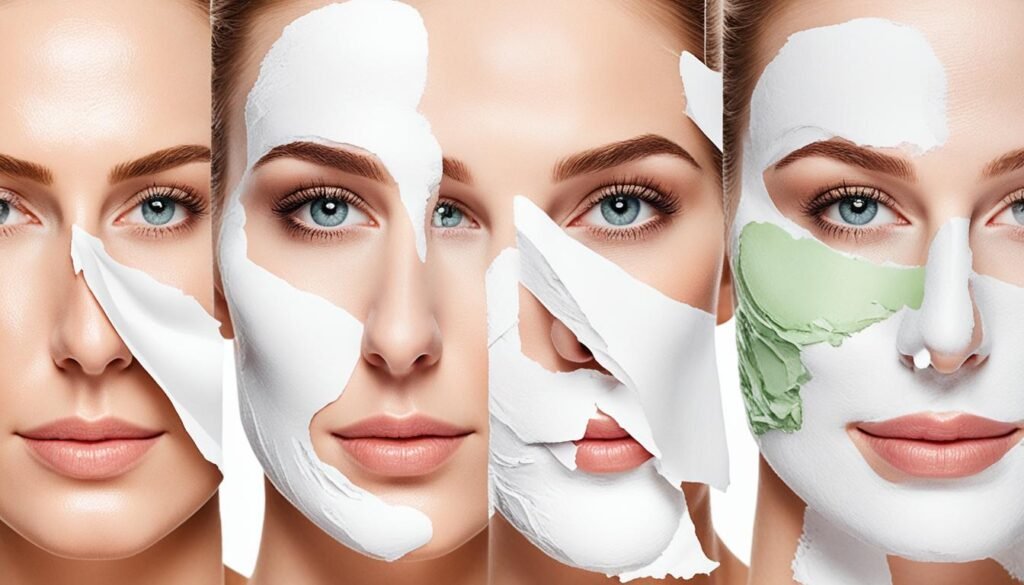 One quick and convenient solution for reducing excess oil and shine throughout the day is to use blotting papers. These thin sheets of absorbent paper are designed to gently blot away oil from the skin without disturbing your makeup. Simply press the blotting paper onto areas of your face that tend to get oily, such as the T-zone, to absorb the excess oil and leave your skin looking matte and fresh.
One quick and convenient solution for reducing excess oil and shine throughout the day is to use blotting papers. These thin sheets of absorbent paper are designed to gently blot away oil from the skin without disturbing your makeup. Simply press the blotting paper onto areas of your face that tend to get oily, such as the T-zone, to absorb the excess oil and leave your skin looking matte and fresh.
Thoroughly Remove Makeup with an Oil-Free Remover
Before cleansing your face, it is essential to remove all traces of makeup. Using an oil-free makeup remover can ensure that your skin is thoroughly cleansed without leaving behind any residual oil or makeup. Look for gentle makeup removers specifically formulated for oily skin to effectively eliminate impurities and prevent clogged pores.
Consider Professional Treatments for Oily Skin
“Professional treatments can provide targeted solutions for oily skin by addressing specific concerns and delivering effective results.” – Dr. Anna Thompson, Dermatologist
If you’re struggling with persistent oily skin, it may be beneficial to explore professional treatments. Blue light therapy is a popular option for oily skin as it helps reduce excess oil production and kill acne-causing bacteria. This non-invasive treatment can effectively improve the appearance of oily skin and prevent breakouts.
Cleanse After Sweating to Remove Oil and Impurities
After engaging in physical activities or sweating, it’s important to cleanse your skin to remove the accumulation of oil, dirt, and sweat. This helps prevent clogged pores and breakouts. Choose a gentle cleanser specifically formulated for oily skin and wash your face thoroughly to ensure a clean and refreshed complexion.
| Additional Tips for Managing Oily Skin |
|---|
| Use blotting papers throughout the day to absorb excess oil and reduce shine. |
| Thoroughly remove makeup with an oil-free remover before cleansing. |
| Consider professional treatments like blue light therapy for oily skin. |
| Cleanse the skin after sweating to remove oil, dirt, and sweat. |
Conclusion
Establishing a consistent skincare routine for oily skin is essential for maintaining healthy and balanced skin. By following a routine that includes cleansing, exfoliating, applying treatment products, moisturizing, and protecting with SPF, individuals with oily skin can effectively manage their skin and prevent breakouts. Incorporating key ingredients such as salicylic acid, retinol, and niacinamide can further regulate oil production and improve the texture of the skin. It is important to consider individual factors such as hormones and consult with a dermatologist for personalized recommendations that cater to specific skincare concerns.
Summary of Essential Oily Skin Care Routine:
| Step | Benefits | Key Products |
|---|---|---|
| Cleansing | Removes excess oil and impurities | Gentle cleanser with salicylic acid |
| Exfoliating | Unclogs pores and removes dead skin cells | Chemical exfoliator with AHA or BHA |
| Treatment Products | Controls breakouts and improves skin texture | Products with benzoyl peroxide or salicylic acid |
| Moisturizing | Hydrates the skin without adding excess oil | Lightweight and oil-free moisturizer |
| Protecting with SPF | Prevents sun damage and reduces signs of aging | Oil-free and non-comedogenic sunscreen |
By incorporating these steps into your daily skincare routine, you can effectively manage oil production, prevent breakouts, and maintain healthy and balanced skin. Remember to choose products specifically formulated for oily skin and consult with a dermatologist for personalized recommendations to achieve your skincare goals.
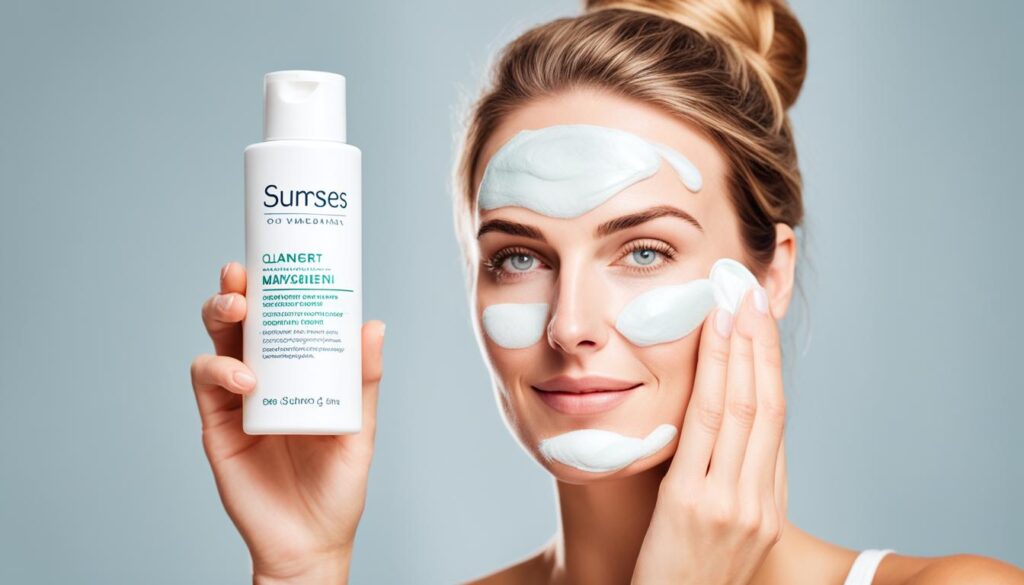
Conclusion
In conclusion, a proper skincare routine is crucial for managing oily skin. By following a consistent routine that includes cleansing, exfoliating, applying treatment products, moisturizing, and protecting with SPF, individuals with oily skin can maintain a balanced complexion and reduce the occurrence of breakouts.
To effectively care for oily skin, it is important to choose products specifically formulated for oily skin. Look for cleansers and moisturizers that are lightweight, oil-free, and non-comedogenic. Incorporating key ingredients such as salicylic acid, retinol, and niacinamide can help regulate oil production and improve skin texture.
Remember to consider individual factors such as hormones and climate when developing an oily skin care routine. Consulting with a dermatologist can provide further guidance and personalized recommendations for an effective skincare regimen. With a tailored routine and consistent effort, individuals with oily skin can achieve a healthy and balanced complexion.
FAQ
Q: What is a skincare routine for oily skin?
A: A skincare routine for oily skin typically involves cleansing, toning, and moisturizing using products specifically designed for oily skin types.
Q: What are the best products for oily skin?
A: The best products for oily skin include oil-free cleansers, lightweight moisturizers, and products containing ingredients like salicylic acid or benzoyl peroxide.
Q: How can I get rid of oily skin?
A: To help get rid of oily skin, make sure to cleanse your skin regularly, use a toner to balance oil production, and choose oil-free or mattifying skincare products.
Q: What are some tips for managing oily skin?
A: Some tips for managing oily skin include avoiding heavy or greasy products, using blotting papers throughout the day, and incorporating a clay mask into your skincare routine.
Q: How can I create the best skincare routine for oily skin?
A: To create the best skincare routine for oily skin, focus on gentle cleansing, using a toner to balance oil production, and choosing products that are non-comedogenic and oil-free.
Q: How can I calm oily skin and reduce the appearance of pores?
A: You can calm oily skin and reduce the appearance of pores by incorporating products containing niacinamide, retinol, or peptides into your skincare routine.
Q: What should I consider when choosing skincare products for oily skin?
A: When choosing skincare products for oily skin, look for lightweight, oil-free formulas that are designed to control oil production without over-drying the skin.
